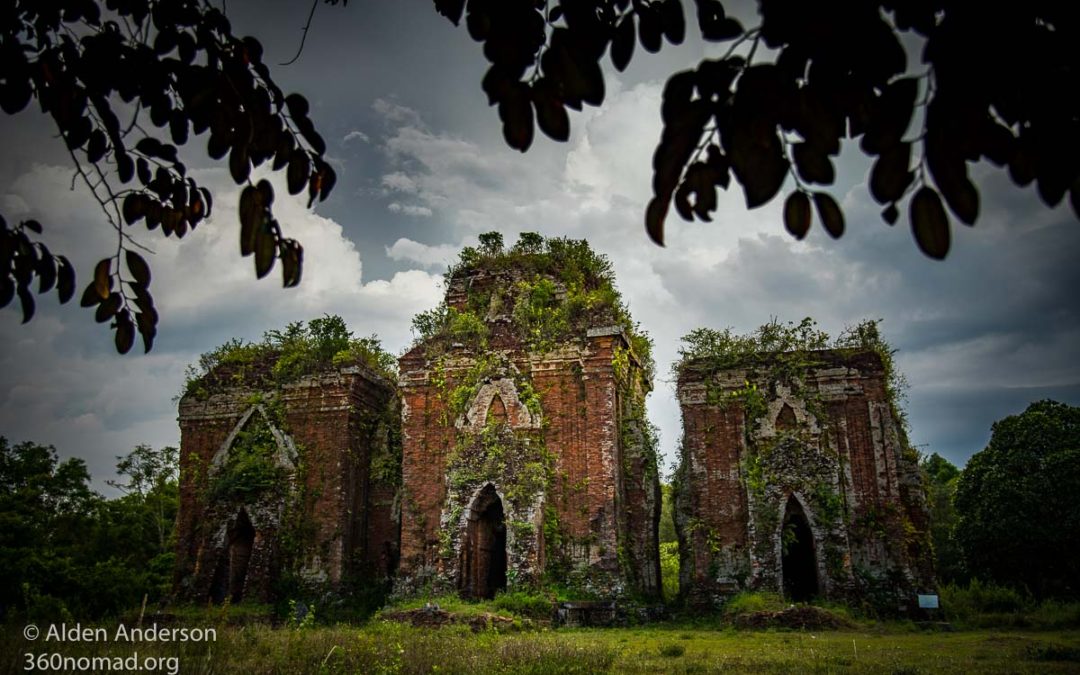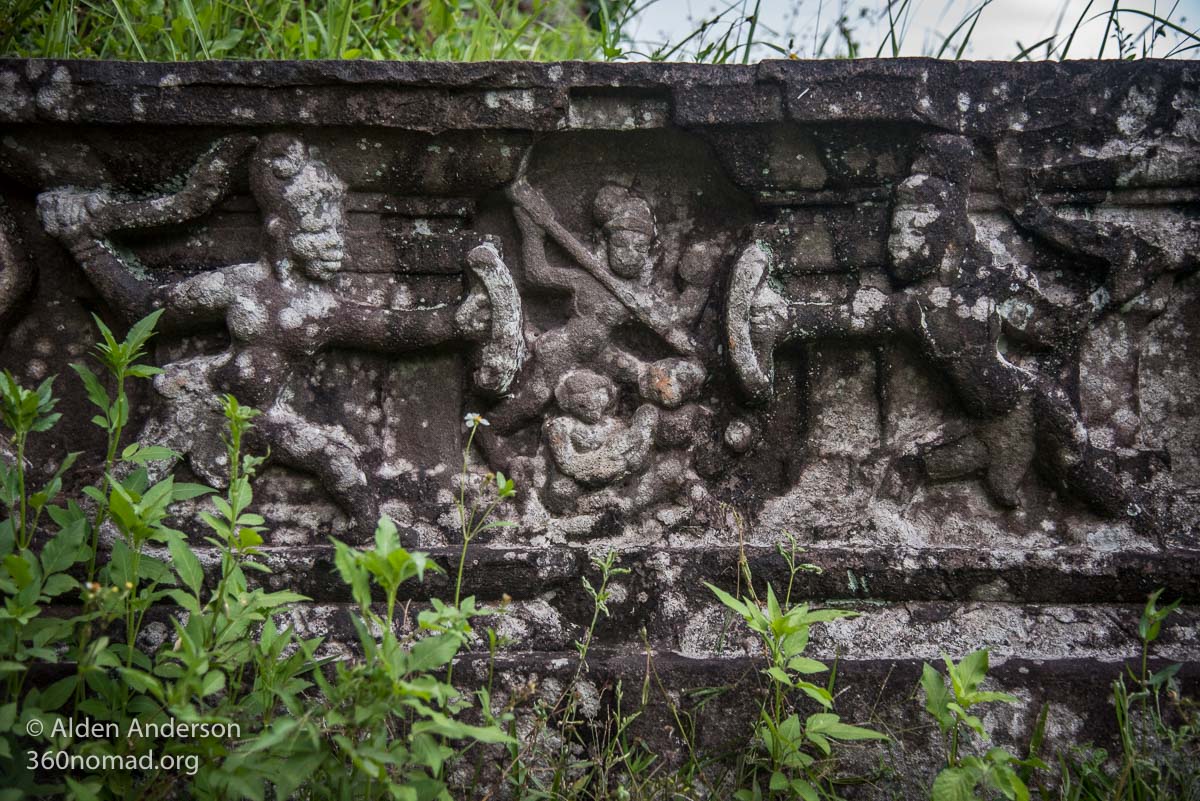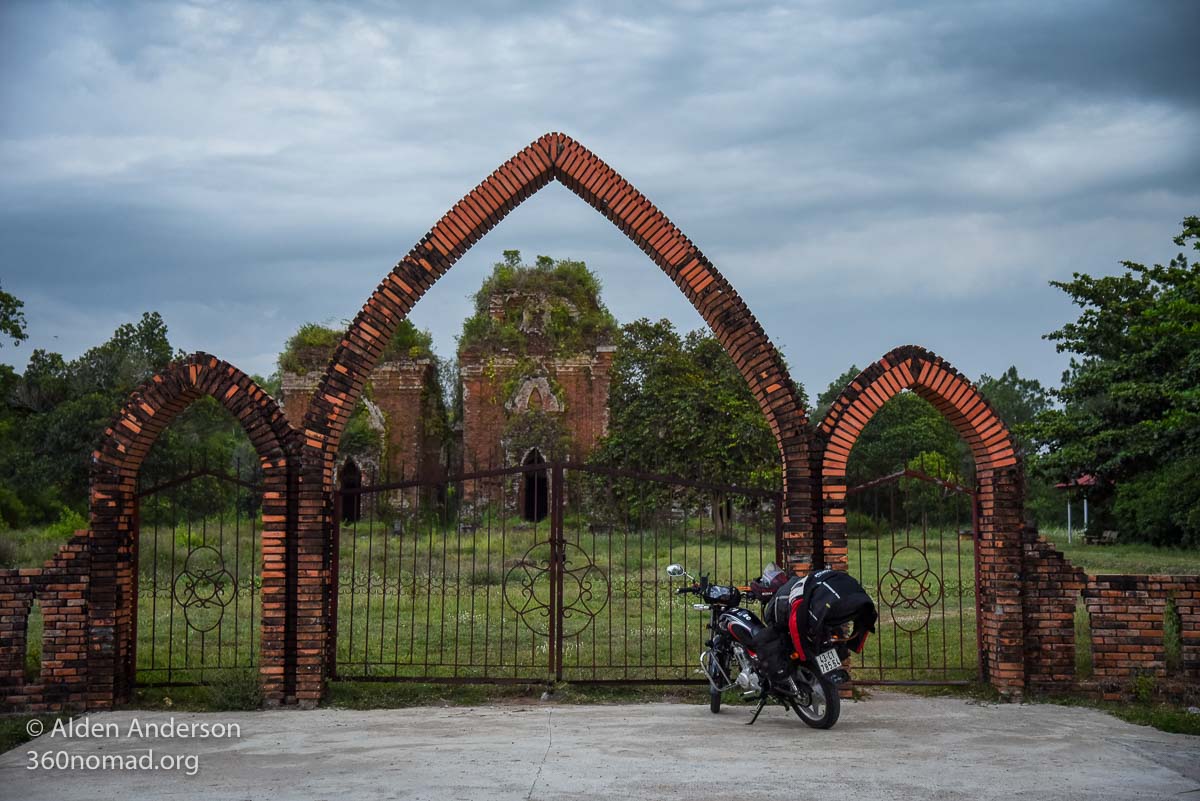Under an ominous sky and setting sun, I pull off the highway. Just a few hundred feet away three towers come into view. Old and overgrown, grass and bushes sprout from the cracks between the terracotta bricks. It feels like an ancient forgotten city, in fact, it is. Once part of the great Champa, a region ruled by the Cham ethnic group throughout what is now Central and Southern Vietnam. These are the Chien Dan Cham Temples near the town of Tam Ky.
The archeologist inside me ignites my imagination as I wander through the grass in front of the temples. Crumbling bricks and stone pedestals hint at a grand entrance to this trinity. I wonder what it might have been like 900 years ago when the Cham people flourished in this region.
I soon discover that I’m alone here. As the last light fades on a cloudy afternoon I walk through the grass and into the temples. A few ancient carvings adorn the base; much of the remaining statues have been moved into a simple museum nearby.
The towers on the North and South sides have lost their roofs over the last 900 years of exposure to the elements. Although if you keep in mind that the Cham people used no mortar in their structures, you realize how much of a feat of engineering this was. Instead, they used a kind of interlocking dovetail method for the terracotta bricks. And now, almost 1,000 years later I can marvel at these ancient structures and still see the beautiful details.
Champa — The Region
The region controlled by the Cham people for over 1,500 years is called “Champa”. It encompasses most of Central and Southern Vietnam. Established in the Second century AD it lasted for over 1,500 years and was eventually absorbed into Vietnam in 1832 by the Nguyen Emperor Minh Mang, though it was in decline since the 10th Century.
Unfortunately, there aren’t any Cham left in this region; after many conflicts over the years, they were forced to move further South around what is now Nha Trang.
Religion of the Cham People
When these temples were built around the height of Champa, the Cham people practiced Brahmanism, an early form of Hinduism. Evidence of this can be seen in their stone carvings that can be found around the base of the temples as well as in the museum nearby.
Over the years the religion has changed and a lot of Cham people have adopted Islam in a kind of mix of religions that is common in Asia. It has elements of Islam as well as their traditional Cham culture. These are the Bani Cham. There are however Cham people who still practice Brahmanism with a mix of local traditions, these are the Balamon Cham.
Further, some of the ancient Cham temples (like that in the Marble Mountains of Da Nang) are used as Buddhist shrines of worship, with the Linga (representation of the Creator God Shiva in Hinduism) still venerated by multiple faiths.
Now as darkness sets over the three towers I get back on my motorcycle, leaving this ancient Cham city behind me, pulling back onto the highway I’m back in the hustle and bustle of the daily life of the Vietnamese people.
Logistics
Location: 8 km North of Tam Ky, Quang Nam Province, Vietnam
Entrance Fee: None
Museum: Small museum on-site
Get There: The three towers are just off of highway QL1A (on the West side) about 8km North of Tam Ky. Marked on Google Maps as “Chien Dan Cham towers”.












